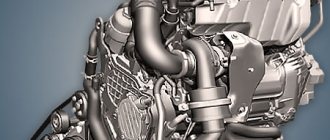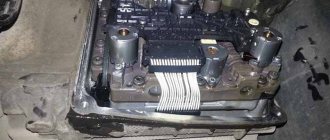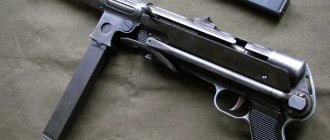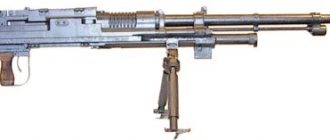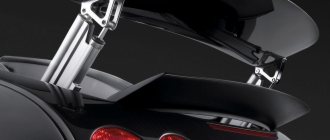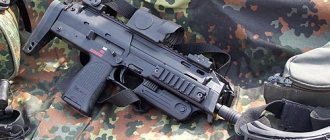Living classic
The C-class in the W204 body is rightfully respected. Firstly, stylistically it imitates, but does not copy, the S-class flagship. Today, even live, you won’t immediately understand where C is, where E is, and where (if from afar) is “Eska”. In the second half of the 2000s, there was still visual diversity.
Secondly, Stuttgart had not yet begun to play on the field of the Bavarians with their fun-to-drive, and that W204 still professed the values native to the brand.
Third, it remained relatively simple in terms of technology, so its survival on the secondary market is more obvious than that of its replacement, which became thinner, lighter, more electronic, but more complex.
You can also find “fourthly” - a variety of variations and affordable prices. At that time, before the advent of the CLA, the C-Class was the most affordable of the Mercedes. Dealers gave generous discounts on it (especially on fixed configurations), so it was sold very widely throughout the country, and, therefore, there is a considerable selection on the secondary market.
Also read: Mercedes-Benz E-Class W211 - affordable luxury and what to expect from it
What to choose from
Of the three body types to start with:
- sedan is the most popular (1,268 offers);
- coupe is the second most popular (98 offers);
- the station wagon is truly exotic (35 offers).
Well, practical station wagons don’t take root on Russian soil, especially on cars with a three-pointed star on the hood. Nothing less than an echo of the 90s and the reputation of a sedan of men who solve problems.
There are a scattering of engines for each body type, but the main demand is for gasoline units of 1.6 liters and 1.8 liters (156 and 184 hp, respectively). Offers for diesel (204 hp) are piecemeal, the ratio is approximately 98% and 2% in favor of gasoline (665 and 12 offers).
The drive is both classic rear and full 4Matic. But on the secondary side it is as exotic as a diesel engine. Moreover, if you come across an all-wheel drive option in this generation, you should take it. There is a minimum of control electronics here; a cylindrical differential is responsible for the distribution of torque between the axles, and this torque is divided in a ratio of 45:55 in favor of the rear axle. That is, if you wish, in winter you can drive it with rear-wheel drive excitement, but with greater control over the situation.
In terms of configurations, you will most likely find those same “package” options that dealers called something pretentious, like “Special Series”. There is nothing bad about this. It was more profitable to take such versions than to collect options individually in the configurator. But due to this, there are almost no poor configurations on the secondary market. Automatic, normal sound, at least - a combined fabric + leatherette finish for electrically adjusted seats and a standard media system - are frequent guests in the C-class W204.
As well as the clumsy, un-German, ridiculous ergonomics. Today they finally thought of placing maximum functions in the touch screen menu, and then there is an overloaded steering column switch (the only one responsible for both wipers and turn signals), a piano key on the central console, a little less on the steering wheel, and there are also adjustments climate and instrument scales with fine digitization...
In short, ergonomic horror.
Someone may turn to a poetic comparison with spaceships, and they would be right if this is a spaceship from the naive ideas of the 60s. Everything is as clumsy and overloaded as possible, but it is absurd and inconvenient.
However, fans of the brand will object. There is no point in trying to persuade.
Also read: Mercedes Benz S-class AMG V: what's wrong with a limousine from the early 2000s
Untitled-1
CO-PLATFORMER
The chassis architecture of the Tseshka is no different from the E-class. But the reliability of the chassis elements of the younger model is higher.
The front suspension uses adjustable wheel bearings, which require maintenance at every service. If they are not adjusted, the play will become so large that the brake disc will start to touch the caliper bracket - repairs will cost a pretty penny.
After 60,000–80,000 km, the silent blocks of the trailing arms die. They are available as separate spare parts.
By 100,000 km, the front shock absorbers fail and begin to knock. Usually they are replaced immediately with the support bearings, which by this time are also very tired.
In the rear suspension, the silent blocks of the front beam support need to be changed at 60,000–80,000 km. This is the only weak link. In general, the reliability of the front and rear suspensions can only be envied.
The front brake pads last for 30,000 km, the rear ones for 45 thousand. In winter, increased wear of the rear pads is possible due to the active operation of the stabilization system.
The differential doesn't cause much trouble. Gearbox seals survive 150,000 km, and cases of replacing drive boots are rare.
There will be no problems with the 4Matic all-wheel drive transmission, except that by 100,000 km the drive boots and front gearbox seals may require replacement. Even a 3.5 liter engine is not capable of harming the clutches in the transfer case.
Problems of the Mercedes C-Class
Initial 1.6 engines are tenacious, both in compressor and turbocharged versions. But with 1.8-liter engines, repairmen noted widespread cases of stretching of the timing chain, which, according to regulations, is supposed to last for its entire service life. If you hear uncharacteristic noises from the engine, you should go to a service station and think about replacing the unit (3-7 thousand rubles, if not the original).
Another common problem is a leaking oil filter. Solved by replacing the oil filter (from 500 rubles).
Automatic transmissions are flawless in the case of pre-restyling models before 2010. and are more capricious on later Tseshkas, because it is a different unit (seven gears instead of five), and its lack of cooling system was more pronounced. The unit has become more sensitive to overheating, hence there are frequent cases of failure of the control board (about 20 thousand for disassembly, from 60 thousand - a new original, but a duplicate cannot be found) and high gear clutches (almost 7 thousand for a set, not original) .
For all-wheel drive Fomatics, at 100 thousand km, gearbox oil seals (from 600 rubles apiece) and drive boots (1-2 thousand for non-original ones) may need to be replaced. Everything else still lives in hundreds of thousands, even with the aggressors. What is not a clear benefit from the “mechanical” nature of all-wheel drive?
As for the rest... Well, yes, if you rummage through the reviews, you can find complaints about a broken CD player, and some other electrical problems. But they are all one-piece, random and are mainly associated with corrosion of control units.
Also read: Dilemma: old Mercedes versus fresh Kia
Second hands: Mercedes-Benz C-Class in the back of W204
Second hands: BMW X3 E83 – a reliable friend
It so happened that Russian drivers did not like the younger brother of the popular BMW X5 crossover, and it is worth noting - completely in vain. The BMW X3 E83 has its own characteristics for which it should be respected and loved...
It so happened that Russian drivers did not like the younger brother of the popular BMW X5 crossover, and it is worth noting - completely in vain. The BMW X3 E83 has its own characteristics for which it should be respected and loved. A little history In the wake of the popularity of the first premium crossovers X5 E53, the Bavarian automaker decided to release a more budget option. This is what the future X3 became, having inherited the general concept, the car received simpler technical equipment, a simpler interior and reduced dimensions. Thanks to this, the new product turned out to be lighter, which made it possible to use less powerful engines, which are represented by two-liter four-cylinder power units running on gasoline and diesel fuel. But it is worth noting that the most popular engines remain the classic BMW in-line six-cylinder longitudinal engines. With which the new and lightweight X3 received dynamics superior to its older brother. And the thoughtful weight distribution (which is approaching the golden value of 50x50 between the two axles) added unsurpassed handling to the car. In the Photo: BMW X3 E83 pre-restyling and updated version In Russia, most crossovers were equipped with all-wheel drive with an automatically engaged front axle. But in the United States of America there was a modification with rear-wheel drive, but it cannot be found in Russia. The interior looks less presentable, but the German quality of finishing and thoughtful ergonomics remain in place. The first restyling in 2006 occurred due to a large number of negative reviews about the quality of the interior and frequent problems with the front driveshaft. In addition to correcting “childish” mistakes, the car acquired new configurations with an expanded range of power units and automatic transmissions. Reliability of the body in the BMW X3 The design of the younger crossover caused a storm of negative emotions among fans of the German company. In their opinion, this car has nothing left of the classic BMW aggression, and the car itself looks very simple. But this circumstance did not affect the classic quality of the car’s body parts and paintwork. The external condition of the car remains attractive and without traces of corrosion for a long time. But you need to keep in mind that any car is susceptible to corrosion. Therefore, before purchasing, it is better to examine the classic hidden spots of rust. For example: under the plastic body kit and under the bumpers, rear wheel arches, the lower part of the front and rear doors, welds in the engine compartment. Corrosion on the body is rarely visible, only in very advanced cases, but nevertheless it is almost always there, you just need to remove the plastic covers and panels, so the inspection must be carried out extremely carefully. It is also worth noting that the decorative elements of the body are less durable and may lose their appearance by the age of five. Painted door handles begin to peel, chrome and aluminum parts begin to lose their appearance. The maintained appearance is even more aggravated when used in Moscow. It has been said more than once that the chemicals used in the capital to keep the roads clear of snow greatly accelerate the aging process of cars. Therefore, a 7-8 year old car from the provinces may look fresher than a 4-5 year old car from the capital. Quality of interior trim and equipment But the desire of the company management to make a cheaper car also influenced the quality of other minor elements of the car. For example, some owners note the fragility of door locks, the replacement of which costs a pretty penny. Others complain about problems with the window lift cable, which over time becomes frayed and jams the mechanism, which leads to the electric motor burning out. In addition, there are complaints about an unsuccessfully routed rear window washer tube. Apparently for ease of assembly, it is laid along with the main wiring harness along the bottom under the driver's seat. The fact is that due to kinks and aging of the tube, it can burst. Therefore, constant moisture on the floor is not uncommon, but this affects the wiring and operation of electrical equipment. The design of the climate control system is also far from ideal. The service life of the interior fan is no longer than that of inexpensive sedans: literally five years - and now the engine is noisy, and then the fan stops. The climate system works well, but does not last long. By the age of five, the climate system motor may become noisy or fail, and the air duct dampers may break or their drive may become jammed. As for the interior itself, many lovers and connoisseurs of BMW interior design were disappointed. The salon looks rustic and poor compared to other models of the brand. And the quality of finishing materials clearly does not reach the premium level. Therefore, many picky owners complain about the appearance of squeaks and noises. And the leather upholstery of the chairs, in their opinion, is of low quality and quickly loses its appearance. But the truth is that there are cars older than 10 years with the interior in decent shape. The only thing is, when buying a used BMW X3, you should immediately choose the option with the interior in good condition. Replacing worn out or broken elements will cost a large sum. Quality of Electrics and Electronics Surprisingly, the BMW X3 E83 differs from its counterparts in the small number of periodic breakdowns and glitches of electrical equipment. Malfunctions appear periodically, but all of them are not critical and are relatively inexpensive to solve. There are relatively few electronic units, and therefore electrical equipment will break down less often. The wiring itself is made with high quality and does not cause any trouble. When it comes to a variety of electrical problems, the BMW X3 is rather an exception to the rule. Surprisingly, he is almost not troublesome in this regard. Malfunctions inevitably happen, but they can be solved easily and not even very expensive. The most common problems are the output of the ESP unit in the driver's door, due to a design miscalculation. Over time, it becomes flooded with rainwater and fails. Also, there are frequent problems with the heated steering wheel and seats. If the heating fails and does not cause any damage, then the electric seat heating, if it burns out, can damage the leather covers. In addition, driver presence sensors often fail, and if they break down, various “glitches” and errors can occur. Therefore, be careful that no one places their feet on the chairs. Often the drive of the second half of the sunroof fails, but repairing it is too expensive. Therefore, the second part is most often tightly blocked and not repaired. There are also complaints about the head optics; they often lose their seal, and the glass can become cloudy. But in stores the glass itself is present and all problems can be repaired with little effort. The quality of the chassis and steering And in this part of the car, the BMW X3 E83 looks much better than its brothers of the brand. It’s worth starting with the brake system, which on this car is distinguished by its quality and reliability. The brakes are tuned for maximum efficiency, but the service life of the brake pads and discs significantly exceeds the usual periods for the X5. All brake lines, mechanisms and the ABS control unit are satisfactory. And the cost of original kits does not force you to think about selecting analogues from other manufacturers. The steering is based on a simple steering rack configuration that works in “any” conditions. The only thing, as mentioned above, is that the ZF Servotronic force control control unit often fails. The valve system has not yet broken down so often that it would become a statistical item on the list of frequent breakdowns, and play in the steering rack can only begin after 200,000 km, but it can be solved quite simply. Steering ends and rods have to be changed every 100,000 km, which is a good indicator for BMW suspensions. Steering ends and rods have a service life of at least 80-100 thousand kilometers, and the price is also relatively low. The suspension itself was more reliable than that of its older brother X5 or other passenger models. All thanks to the use of steel elements, instead of aluminum on other models. Maintenance is much cheaper due to the possibility of separately replacing silent blocks and ball joints. All elements last quite a long time, and until the first 100,000 km, not a single replacement is required, except for the struts and stabilizer bushings. Even with a mileage of 200,000 km, you can find cars with original suspension parts that do not require replacement. But this is only possible with careful use on a flat road. The brakes are not only well-tuned and effective, but also reliable. Consistently high service life of discs and pads, reliable brake lines, strong ABS block. If you compare the BMW X3 with the BMW X5, the difference in the cost of suspension repairs can reach several times. At the same time, it is worth considering a longer service life and lower cost of spare parts. Transmission quality But the quality of the transmission will have to be given more attention. For example: cars before the update (before 2006) are famous for frequent problems with all-wheel drive. The front driveshaft had a short resource. But, starting in 2006, the design was slightly altered and equipped with a protective casing covering the rear crosspiece of the front shaft. This has increased the service life, but still requires close and constant attention. As the front driveshaft wore out, it completely broke all the elements of the front transfer case, after which the entire mechanism was thrown into a landfill. A new one costs prohibitively much. Therefore, if you experience jerks, jolts, squeaks or crackling noises during acceleration, you should quickly visit a service station to diagnose the transfer case and carry out urgent repairs. In the transfer case, not everything is so smooth: in the range from 100 to 150 thousand km, there are cases of chain stretching, as well as failure of the multi-plate clutch servo drive. By this time, the crosspieces of the front cardan may wear out, which is why the entire shaft will have to be replaced - it is non-separable. Also, the transfer case has a short service life of the servo gears for connecting the front axle. Therefore, many high mileage cars are rear wheel drive only. But it is worth noting that if in the first years of operation it was necessary to change the entire servo drive, now you can purchase a repair kit and have it repaired at a service center. In addition, various owners periodically have problems with the rear gearbox. It is very picky about the oil level and wears out quickly. But crossovers with 3.0-liter engines can also boast that they can cut differential pinion gears and damage bearings. In this case, repairs are possible only in rare cases; generally, you have to replace the unit with a new one. Reliability of gearboxes Although the BMW X3 is rarely found with a manual gearbox, it is still worth remembering about them. According to the experts who service BMW cars, the mechanics on this model are very reliable and can last until the very end. But it’s worth remembering about replacing the clutch and the limited resource of the dual-mass flywheel. But with automatic transmissions everything is more complicated. Pre-restyling models were equipped with five-speed automatic transmissions manufactured by GM. Without going into specific details, the box has a negative attitude towards high engine speeds and aggressive driving by the driver. It is extremely sensitive to overheating and quickly exhausts the life of the torque converter locking linings, which leads to rapid oil contamination. Also, the vane pump and PWM solenoids with plastic washers cannot withstand aggressive use. Most of the cars on our market are automatic. In our conditions, the service life of automatic transmissions (again, with adequate operation) approaches the service life of engines: 250–300 thousand km is not the limit for them. But if you drive the car in a quiet mode without sudden starts with wheels slipping on the asphalt, and change the transmission oil in the box every 70,000 - 80,000 km, then the box will quietly live 250,000 km until the first need to replace the torque converter locking linings and the Drive clutch pack . But a single overheating of the box will lead to a full-scale repair. Starting from 2005, some models with a three-liter diesel engine, and since 2006, a six-speed automatic transmission ZF 6HP26 was installed on all restyled models equipped with engines with a displacement of 3 liters. Its advantage was its greater tolerance for aggressive driving style. But even in quiet mode, the torque converter locking linings did not operate for more than 150,000 km. Besides. The box also had a number of other nuances that made life difficult for the owner. Early modifications of the box were subject to numerous “childhood” diseases, due to the first experiments in assembling the valve body with control electronics. It is pointless to list all the faults that arise; most of them are individual in nature and depend on many factors. But the main part of the repair work was carried out on the valve body. Even with frequent changes of transmission oil and careful driving, on many cars the first repair of this gearbox occurs at 150,000 km. At the same time, if you do not pay attention to the symptoms, then subsequent repairs or replacement of the entire unit will cost more. Before the 2006 restyling, almost all cars were equipped with five-speed gearboxes produced by GM of the 5L40E series. Automatic transmissions installed in tandem with two-liter ZF 6HP19 engines are a modification of the previous transmission and have no major differences, including differences in breakdowns. The only difference is a slightly longer life due to the lower load from the less powerful motor. In addition, on cars after restyling there is a six-speed automatic transmission GM 6L45. This box was installed in tandem with 2.5 and 3.0 liter engines. Boxes from General Motors were distinguished by a large number of “childhood diseases”. For example: on cars before 2008, there were frequent problems with the oil pump cover, this caused rapid wear of the clutch packs. The first signs of a malfunction were jerks when the gearbox moved from the second to the third stage. In addition, on the first versions of the transmission, there were cracked S55 drums due to manufacturing defects. Also, the gas turbine engine could break down not only from wear of the torque converter locking linings, but also its hub could fail. Being a modified version of a five-speed gearbox, this transmission also does not like aggressive driving and heavy loads, but using the car in a careful mode, you can achieve a long service life. Reliability of power units The pre-styling version of the BMW X3 E83 was equipped with two types of engines - four-cylinder N46B20 and classic sixes of the M54 series. First of all, those wishing to purchase a model with a “four” should be warned about the extremely poor design of the unit. In addition to the fact that the 2.0-liter engine is not powerful enough for a crossover, the design is also overloaded with complex mechanisms that complicate repairs. BMW designers equipped the engine with a throttleless intake system, VANOS phase shifters and other technical innovations. Thanks to this, the engine gained additional horsepower and torque, but reliability decreased. The N46B20 engine has a high operating temperature, which requires constant maintenance of the cooling system, and has acquired frequent leaks. In addition, the low-power engine is prone to constant oil consumption, and fuel consumption is slightly less than three-liter options. Therefore, when choosing a car on the secondary market, it is better to refuse copies with these units. Most X-Thirds that can now be found on sale were equipped with either 2.5 liter (192 hp) and 3 liter (231 hp) M54 in-line petrol sixes, or 3-liter turbodiesels (204 hp) More powerful power unit options are represented by the M54 series with a displacement of 2.5 and 3.0 liters. It is noted that this series of power units has deservedly won the title of “millionaire”, and is capable of serving about 500,000 km without major interventions. But this does not exclude the need for constant maintenance of the engine, and the fight against emerging oil leaks, the whimsical crankcase ventilation system, and troubleshooting problems with the plastic intake system. Like many engines from the Bavarian BMW concern, they are afraid of overheating, and at the slightest increase in operating temperature, the engine begins to actively consume oil due to coking of the rings. Also, engines are prone to a drop in compression when running cold in the winter. This is due to the not entirely successful design of the hydraulic compensators. It is worth recognizing that these engines are the most successful options in the line of BMW X3 modifications, and with proper maintenance and careful monitoring of the cooling system, you will not get much trouble from it. But it is worth mentioning that increased oil consumption on these motors quickly disables catalytic neutralizers, the cost of which will make you think about the advisability of their replacement. Drestyling variations of the M57 diesel units turned out to be even more reliable and attractive to a three -liter counterpart working on gasoline. It was installed after restyling, but in a modified form. Also, this motor turned out to be the most powerful of all represented for the crossover, equipped with two turbines, it could develop up to 286 horsepower. With small overheating, the motors acquire oil appetite due to the hair of the rings, which can be cured at the initial stages with the splitting or replacing the rings. The diesel engines turned out to be less whimsical and work calmly and for a line of marks of 300,000 km of run. Also, they are distinguished by the lack of special appetite to the clock, and are not prone to overheating. It was not without minuses, but there are much fewer of them. The owner still will have to monitor the constantly emerging flows of oil, the state of the oil pump, the performance of the thermostat, the crankshaft pulley and the condition of the exhaust manifold. Diesel engines are not whimsical, but the cooling system requires great attention to its state. It is necessary to monitor the tightness and condition of the pipes, and the cleanliness of the radiators. And the exhaust manifold is inclined to crack, which requires constant attention. Small broken pieces can damage turbines and, in extreme cases, can fall into the combustion chamber. The same applies to the intake manifold, which is equipped with vortex shutters that can break off with great wear and get into the cylinders. At the first signs of wear, it is necessary to replace the intake manifold or dismantle the shutters. Naturally, do not discount the standard problems of diesel units. Like all European and Japanese cars with diesel engines, the BMW X3 is very sensitive to the quality of diesel fuel. And first of all, due to poor-quality fuel, nozzles and high-pressure fuel pump begin to suffer. In addition, they do not differ in reliability and glow candles, which are enough for a maximum of 2 seasons, and a burned candle can cause the failure to control the global control unit. Every 50,000 - 60,000 km will have to serve the EGR valve and a turbine with variable geometry. The M47TUD20 diesel engines with a 2 -liter working volume, installed on prerestyling models, are a cut version of the M57. Therefore, he inherited the entire list of positive and negative moments, except that some owners are faced with ECU failed blocks. And the circuit of the gas distribution mechanism drives from 150,000 km to 180,000 km, but it is located in the front of the engine, and its replacement is much easier than that of the older brother. Diesel engines before restyling are variations of the beautiful three -liter M57. He was also put after restyling, but in slightly modified modifications. But everything has changed at the commissioning of modified engines on updated X3. After 2006, the crossover received the new N52 engines (instead of M54) and N47 (instead of M47). On the one hand, modern technologies were used in new engines, but many childhood diseases affected the reliability and cost of service. New six -cylinder engines N52 turned out to be similar to classic versions only at first. The novelty received a cylinder block cast from a magnesium alloy and cylinder sleeves with the new Alisil coating technology. In addition, the engine was equipped with a new Valvetronic II inactive absorption system and replaced the classic pump with an electric pump (turned out to be less reliable), and the engine turned out to be more “hot”. Due to the increase in the operating temperature of the engine, the resource of all rubber and plastic elements of the engine and the cooling system decreased, which led to the accelerated appearance of oil consumption and an increase in the volume of its consumption. This, in turn, led to a rapid lawsuit of rings (especially on engines with a working volume of 2.5 liters. On which the design of the connecting rod piston group came out unsuccessful). In addition, the process of controlling the oil level has become more complicated, the modified motors lost their usual oil probe and remained with an electronic sensor that could show the oil level with belated, which led to serious consequences due to the oil starvation of the engine. Therefore, on modified engines, it is impossible to ignore the oil consumption, which exceeded the level of 200 - 300 ml by 1,000 km. According to experienced engines repair craftsmen, a car equipped with a 2.5 -liter engine should refuse immediately. This unit, in most cases, falls on major repairs with a mileage of 100,000 - 120,000 km. At the same time, oil consumption may exceed 1 liter. 1,000 km, which leads to rapid damage to the catalytic neutralizer. And the new diesel series of N47 engines was also noted by new constructive “features”. The gas distribution mechanism, brought to work by means of a chain, was moved to the side of the flywheel (to the back of the motor). Therefore, to replace or repair the mechanism, you have to dismantle the engine. But, the resource of the timing mechanisms was low, some owners noted the need to replace the chain by 100,000 - 150,000 km of run, and the most “successful” owners changed the chain of 70,000 km. Do not mention the consequences of jumping a chain on the gears, and subsequent overhaul. After restyling, the number of successful engines has noticeably diminished. A quite successful M54 series was replaced by a much more problematic and complex M52, and the M47 diesel engine was replaced with N47 and Alusil, which differ from them in design not for the better. It is worth clarifying that the new timing elements are usually nursed for more than 150,000 km. Therefore, before buying a mileage car, it is necessary to specify about the replacement of timing elements and when exactly they were carried out. Otherwise, the modified motor turned out to be less whimsical, and the fuel system is more tolerant of domestic fuel. After reading the article, before a person who wished to get an inexpensive crossover from BMW, a difficult choice appears. In addition to the general condition of the car, you will have to choose a more successful complete set of units. First of all, the version X3 equipped with a three -liter engine and a mechanical gearbox is extremely beneficial. But there are several nuances: it is very difficult to find such a modification in Russia, and if you wish, a dynamic driving - you will have to be content with automatically or look for a mechanical box for a long time. But by operating the car in a calm mode, you can achieve a long and trouble -free operation of the car for many years. Also, you can purchase a car modification after 2006 with a new N47 engine. But a preventive replacement of the timing chain is required, the cost of which is calculated in tens of thousands of rubles. In the future, operation will be pleasure. The above problems are unlikely to meet in one car, and if you do not stir up for competent diagnostics, then at the price of a budget foreign car you can purchase a much more interesting car. BMW x3, perhaps, is one of the most suitable for Russian conditions of Bavarian brand cars. At the same time, remember that the N52 2.5 -liter gasoline engines should be avoided, and automatic gearboxes for six steps. With such units, the BMW X3 E83 operates without breakdowns of not more than 100,000 - 120,000 km, and subsequent repairs will not justify any savings when buying. Otherwise, a small crossover is worthy of respect and favorably differs from the older brothers X5 and X6, its price in the secondary market and the cost of service, including the cost of spare parts. In addition, the car has a more reliable suspension. Author: Dmitriye Cooping Office to see the news
What is it sold with?
The average price tag of the pre-restyling W204 is 654 thousand rubles, for the updated version they are asking 877 thousand rubles.
We liked the white Mercedes with the same tenacious 1.6 liter engine:
We checked the history through avtocod.ru and were upset.
In April 2021, the car was involved in an accident. Judging by the list of repairs, the front part was damaged. Restoration work was carried out twice; everything cost almost half a million rubles:
The third calculation was made in 2021. “Mercedes” already at that moment belonged to the second owner - a legal entity. Under him, registration restrictions were imposed on Tseshka:
The car's mileage was changed before the car was sold, perhaps on purpose, perhaps not, but two years after the last recording, the readings were halved:
It’s better to pass by such a copy, especially since the selection on the secondary market is rich.
Also read: What are the dangers of buying a car from a legal entity?
Body and interior
Introduced in 2006, the Mercedes C-Class W204 was built on a completely new platform. Compared to the previous generation, its wheelbase has increased to 2760 mm. The car has become wider and longer. There were three body types to choose from: sedan, station wagon and coupe. All models were 4.6 m long and 1.77 m wide.
Compared to the previous generation, the Mercedes C-Class has a more decisive design, dominated by straight lines. Inside, Mercedes remained as usual reserved. However, the small sedan provides a fairly good level of comfort for its passengers. The interior dimensions, although inferior to the larger E-Klasse, mainly in width, still allow four adults to comfortably accommodate. There is no need to complain about the quality of finishing materials, reliability and accuracy of fitting of interior parts.
We hasten to reassure car enthusiasts considering a Mercedes C-Class for purchase. Mercedes drew conclusions and corrected previous technical mistakes and shortcomings. In particular, we managed to get rid of such a disease as corrosion. It no longer exists for the Mercedes C-Class W204.
